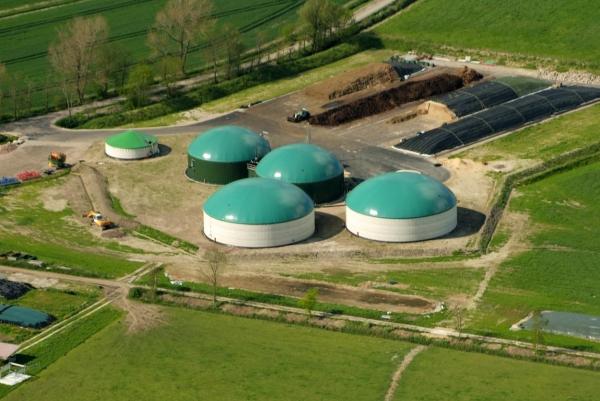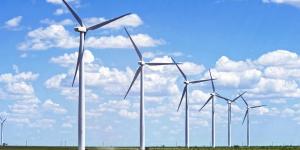What Is Biomethane? - Origin and Uses


In recent years, biomethane has been gaining popularity as a sustainable energy source. Biomethane's significance lies in its ability to combat climate change by capturing methane emissions, a potent greenhouse gas. Derived from organic waste materials, it not only addresses waste management challenges but also offers a renewable energy source that reduces dependence on fossil fuels, enhancing energy security and fostering a circular economy.
We examine biomethane's definition, advantages, and a wide array of uses in the upcoming article by thedailyECO.
What is biomethane and how is it produced?
Biomethane, also known as renewable natural gas (RNG), is a type of biofuel that is produced through the anaerobic digestion or other biological processes of organic materials. It is a form of methane gas that is derived from renewable sources, primarily organic waste materials such as agricultural residues, food waste, sewage, and other biodegradable materials.
The production of biogas occurs through a process known as anaerobic digestion, which takes place in an environment devoid of oxygen. Specific bacteria interact with organic substrates, resulting in the release of gases. The initial product is unprocessed biogas, composed of 50 to 75% methane (CH4), 25 to 50% carbon dioxide (CO2), and minor quantities of water vapor (H2O), nitrogen (N2), oxygen (O2), and hydrogen sulfide (H2S).
This raw biogas can undergo further treatment to eliminate components like water vapor and hydrogen sulfide, refining its composition. Biogas serves predominantly for heat and electricity generation, yet specific applications, such as its incorporation into natural gas networks or its use as vehicle fuel, require purification.
This process involves removing carbon dioxide to increase the methane concentration. Typically reaching a methane content of approximately 96%, the gas aligns with standards for natural gas usage. This improved version is recognized as biomethane, a gas with enhanced purity, making it suitable for diverse eco-conscious applications.

Biomethane uses and sustainability
Biomethane bears a composition and energy profile strikingly akin to that of natural gas. Consequently, it finds applicability across similar spheres, including its integration into gas networks and functioning as a natural gas substitute in diverse ratios. Notably, it also fuels vehicles efficiently.
The production of biomethane epitomizes sustainability. Its raw materials encompass a broad spectrum, rendering its environmental attributes notably diverse. In general, these characteristics surpass those tied to fossil fuel sources. A pivotal advantage emerges when considering the usage of digestates, the semi-liquid byproduct of anaerobic digestion.
By employing digestates as organic fertilizers and soil enhancements, the need for manufacturing mineral fertilizers is obviated, leading to significant cost savings. Importantly, this practice circumvents the emissions associated with mineral fertilizer production. Notably, estimates posit that the adoption of digestates instead of mineral fertilizers could potentially curtail up to 13 kg of CO2 equivalents per ton—a noteworthy stride towards reducing emissions.
Be sure not to miss this related article that delves into the question of whether natural gas is indeed a fossil fuel.
Advantages of biomethane
Biomethane gas presents a multitude of compelling advantages. From a commercial standpoint, biomethane's viability is apparent—it capitalizes on existing natural gas infrastructure and boasts a proven, feasible purification technology. Beyond this, the utilization of biomethane extends a range of benefits.
In harmony with climate objectives, biomethane proves instrumental in curbing CO2 emissions, offering a pivotal contribution to our environmental goals. Moreover, it plays a role in enhancing air quality by diminishing NOx and particle emissions, a particularly salient factor in urban environments. The allure of energy independence also comes to the fore, setting it apart from other energy sources.
Embracing biomethane also reverberates positively in socio-economic spheres. Its production would galvanize the creation of green jobs, particularly in agricultural regions, fostering economic growth and bolstering local communities. Furthermore, as an energy-efficient fuel, it advances our commitment to resource optimization and sustainability.
Make sure to read this additional article, where we explore the key features of renewable and non-renewable energies, along with their distinctions.
What is the process of biomethane production in Europe, and what is its potential?
Biomethane production in Europe is a burgeoning sector with immense potential.
Presently, 15 European countries are actively engaged in producing and utilizing biomethane, an endeavor facilitated by approximately 200 sewage plants spanning the continent. Although the primary application of biomethane is in heat and electricity generation, its role in the transportation sector is on a commendable ascent.
This ascent is exemplified by Sweden, where biomethane's use as a vehicular fuel has already eclipsed that of compressed natural gas, capturing an impressive 57% market share. Similarly, Germany has experienced a notable surge, with biomethane's utilization transitioning from 6% to exceeding 15% in 2012.
Promoting the adoption of biomethane necessitates ongoing backing for innovative technologies that facilitate the creation of sustainable biomethane, the enhancement of biogas to biomethane conversion processes, and its seamless integration into gas networks.
Before you go, take a moment to explore another article where we delve into the process of generating electricity.

If you want to read similar articles to What Is Biomethane? - Origin and Uses, we recommend you visit our Renewable energies category.







